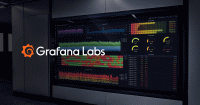AWS Timestream Datasource
The Timestream datasource plugin provides a support for Amazon Timestream. Add it as a data source, then you are ready to build dashboards using timestream query results
Getting started
- Install the plugin
- Add a new data source with the UI or provision one
- Configure the data source
- Start making queries
Configuring the data source
Authentication
Depending on the environment in which it is run, Grafana supports different authentication providers such as keys, a credentials file, or using the “Default” provider from AWS which supports using service-based IAM roles. These providers can be manually enabled/disabled with the allowed_auth_providers field in Grafana’s config file. To read more about supported authentication providers refer to the AWS authentication section
IAM policies
Grafana needs permissions granted via IAM to be able to read data from the Timestream API. You can attach these permissions to the IAM role or IAM user configured in the previous step.
Here is a policy example:
{
"Version": "2012-10-17",
"Statement": [
{
"Effect": "Allow",
"Action": ["timestream:*"],
"Resource": "*"
}
]
}Configure the data source with provisioning
You can configure data sources using config files with Grafana’s provisioning system. You can read more about how it works and all the settings you can set for data sources on the provisioning docs page.
Here are some provisioning examples for this data source.
Using AWS SDK (default)
apiVersion: 1
datasources:
- name: Timestream
type: grafana-timestream-datasource
jsonData:
authType: default
defaultRegion: eu-west-2Using credentials’ profile name (non-default)
apiVersion: 1
datasources:
- name: Timestream
type: grafana-timestream-datasource
jsonData:
authType: credentials
defaultRegion: us-east-1Using accessKey and secretKey
apiVersion: 1
datasources:
- name: Timestream
type: grafana-timestream-datasource
jsonData:
authType: keys
defaultRegion: us-east-1
secureJsonData:
accessKey: '<your access key>'
secretKey: '<your secret key>'Using AWS SDK Default and ARN of IAM Role to Assume
apiVersion: 1
datasources:
- name: Timestream
type: grafana-timestream-datasource
jsonData:
authType: default
assumeRoleArn: arn:aws:iam::123456789012:root
defaultRegion: eu-west-2Querying the data source
The query editor accepts timestream syntax in addition to the macros listed above and any dashboard template variables.
Type ctrl+space to open open the IntelliSense suggestions
Macros
To simplify syntax and to allow for dynamic parts, like date range filters, the query can contain macros.
Using Variables in Queries
Instead of hard-coding server, application and sensor names in your Timestream queries, you can use variables. The variables are listed as dropdown select boxes at the top of the dashboard. These dropdowns make it easy to change the display of data in your dashboard.
For an introduction to templating and template variables, refer to the Templating documentation.
Disabling quoting for multi-value variables
Grafana automatically creates a quoted, comma-separated string for multi-value variables. For example: if server01 and server02 are selected then it will be formatted as: 'server01', 'server02'. To disable quoting, use the csv formatting option for variables:
${servers:csv}
Read more about variable formatting options in the Variables documentation.
Alerting
Alerting queries should contain a time series field. Queries without this field will return an error: “input data must be a wide series but got type long”. To return time series, you can use the CREATE_TIME_SERIES function. For example:
SELECT
silo, microservice_name, instance_name,
CREATE_TIME_SERIES(time, measure_value::double) AS gc_pause
FROM $__database.$__table
WHERE $__timeFilter
AND measure_name = '$__measure'
AND region = 'ap-northeast-1'
AND cell = 'ap-northeast-1-cell-5'
AND silo = 'ap-northeast-1-cell-5-silo-2'
AND availability_zone = 'ap-northeast-1-3'
AND microservice_name = 'zeus'
GROUP BY region,
cell,
silo,
availability_zone,
microservice_name,
instance_name,
process_name,
jdk_version
ORDER BY AVG(measure_value::double) DESC
LIMIT 3Note: Results for Timestream queries are returned in different pages (if necessary) by default. To ensure that all pages are processed before evaluating an alert, mark the “Wait for all queries” checkbox underneath the “Render” query editor section for all alert queries.
Sample Dashboard
This plugin contains one sample dashboard. Please consult the Sample Application section in the official Timestream doc to set it up.
Plugin repository
You can request new features, report issues, or contribute code directly through the Timestream plugin Github repository



